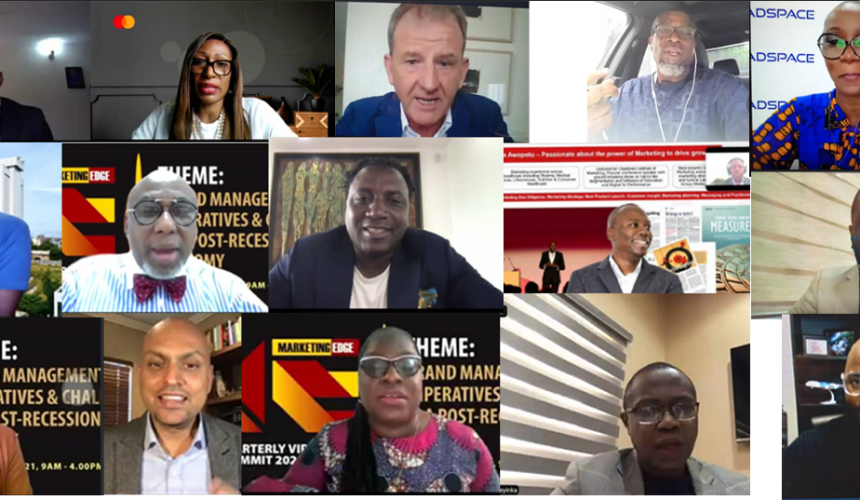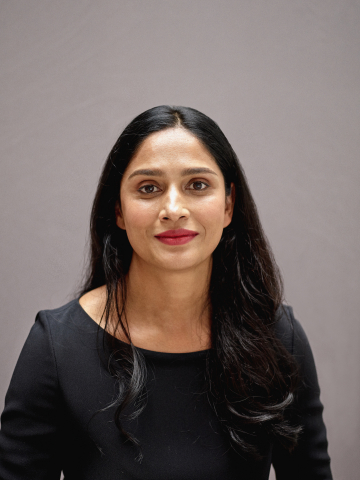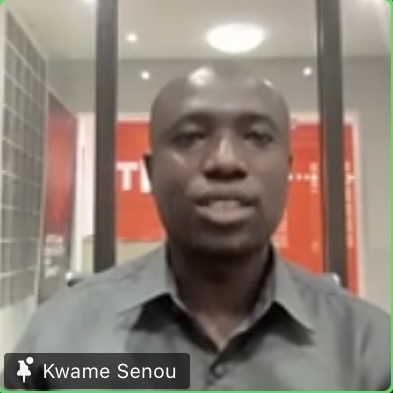
Employing marketing communications tools to navigate out of recession
By Ibidunni Banjoko
Recessions tend to be a tightening of credit conditions on businesses. Early in the recession, interest rates may rise, and then fall as the monetary floodgates open. But throughout the recession, standards for lending in the market tend to be tighter. Even large businesses may face difficulty turning over their debt, which most are dependent on to finance ongoing operations. How does a company or organisation navigate its way out of this economic crunch?
In a bid to find answers to the above question, MARKETING EDGE, Nigeria’s leading publication and brand-focused magazine, gathered the titans in the Integrated Marketing Communications (IMC) industry at its first IMC quarterly Summit to interrogate the theme: “Brand Management Imperatives and Challenges in a Post-Recessionary Economy”, and explore the potentials of marketing as the navigational tool to overcome the challenges in the post-recession economy. We now bring you a synthesis of the strategies employed by some organisations operating in and outside Nigeria to navigate out of the recession.
According to the Group Managing Director of CMC Connect, Yomi Badejo Okusanya, “Year 2020 was a challenging year for many businesses. During the year, brands had serious challenges. Those of us that are in the consulting part of the business know that retainer-ship is our desire because it gives stability; it helps to plan adequately and also helps to move things forward. In the instance that there is no retainer-ship or the retainer-ship has been cut short, we, for instance, had to accept significant drops in our retainer-ship and in some cases, there were changes around the budget and all of these have significantly been affecting our business and the business of the client.”
He continued: “We have seen that many of the clients we are speaking to now or re-negotiating with, or with whom we are negotiating afresh are shying away from the retainer-ship. They are asking for more. Many of them have come up with hybrids.
“So, what we did was to put some on retainer and some on project bases. How does this affect us; how do we survive? One of the things we have adopted is the multi-disciplinary innovation approach. Let me explain this using CMC Connect as an example that started up as a purely PR company.
“We are a specialised consulting firm in the area of public affairs. We have in-digital and also in-agricultural communication, and of course our flagship business, which is brand and tourism. What we try to do is to put in other specialisation; we also try to also create some product that we think can attract the market based on our research. One of them that we offered recently is Crisis Action Plan.
“We realised that most businesses are still in crisis or coming out of crisis, so we carried out a survey and were able to know that most organisations do not have a crisis action plan. 2020 has taught us that it is suicidal for any corporate organisation not to work with a crisis Action Plan. We have not been managing crisis before, but we now put it as a front burner product as a means of making contact with client because we have realised that most client at this point are looking for measures or initiatives that will help their product or their corporate brands survive.”
Speaking on the digital aspect, President, Association of Digital Marketing Practitioners, Uti Ukubeyinje said: “Brands are no longer competing with their industry mates. The experience in digital shows you are competing with other organisations regardless of the industry because people are looking for unique experiences. Everyone wants to be wowed by what the organisation does. They want same result from a telco company and a fintech company.
“On the other hand, there was a time that digital was just a nice thing to have. There was a time most brands will stop at the awareness stage, but it is now different because as brands constantly push to have more performance-driven marketing, they constantly have to move to where they can see and measure performance to some extent.”
He continued: “What this means is that the digitisation of other channels now becomes one of the quickest ways and options to do that. This is something that brands are constantly pushing towards. There is need to increase efficiency. Gone are the days when there is no measurement for some campaigns; when marketers say marketing is not sales, that you cannot measure the marketing effect immediately and that it takes time for you to see the marketing effect. Brands are not buying that anymore, they want to see the result of their investment and as quickly as possible.”
Explaining further, he noted: “The consumers that you are dealing with now as a brand has three core needs based on their behavioural patterns. They want to be heard faster because there are a lot of other alternatives, and if you don’t respond quickly they switch. They expect brands to know them better because they have showed lots of data by just interacting on the Internet. Their expectations are that you as a brand should be smart enough to know my deal with you not just as a statistic with as an individual consumer. They are also dealing with a single brand view from the Internet perspective; there is a lot going on there. They expect the same experience across the board; they expect you as a brand to continue to wow them like the last brand they interacted with whether it is related to you or not.”
He therefore advised that, “The brands need to make use of every single data that is available to them about the consumer in other to design how they interact with the consumer nothing should be left out in trying to understand the consumer. As a brand we need to move away from seeing digital as a communication channel only, it is very important that brands have to think about digital as an experience start building the type of experiences that will enhance whatever form of channels or touch point that were available to the consumer before you establish a presence online.”
“Right from the very beginning it goes beyond having a social media page where you post things that you are doing and your offers. It should be a holistic experience and at the end of the day building brands entails building consistency. Let digital be seen as an experience center where you are enhancing the process of being reached, your product being purchased, consumed and even building that loyalty or relationship that is expected post-purchase,” Oti advised.
Talking from a pan-African perspective, Preetesh Sweraj, CEO Loeries, said: “We should not adopt copy and paste approach because we have micro community that is developing. People are becoming smaller and smaller communities in everything we do. Even in our own countries, we should not think about people as a monolith. We should think about how especially in time like this in the time of challenge in the time of need for innovation in this post-recession environment, how do we look and innovate for the customers who are going to bring the biggest value for our business.”
He concluded by saying: “We need to look at the past; look at what happened; look at the challenge others societies are facing and use this as a cornerstone to basically move forward. If we are able to do that we will be able to re-define and reimagine Africa. A Roman philosopher once said, there is always new thing coming out of Africa’. This speaks to our bounteous content to be able to excite, innovate and make the world see new opportunities. We still have potential. I think we should be able to look at how our organisations can move outside of Africa; move outside of our societies and actually take over a wide part of the world. It is high time for us to do that and we can only do it by innovation.”




Comment
No comments found.